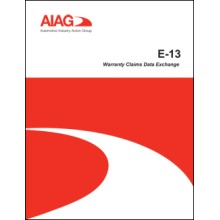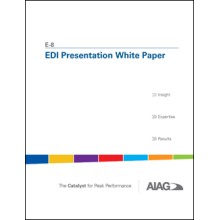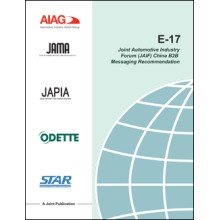E-11 T.120 Automotive Data Conferencing Architecture
Quantity:
-
Add to Compare
This document describes the industry-standard International Telecommunications Union T.120 Data Conferencing specification, and discusses how it operates over the Internet and ANX.
In order to participate in today's e-business enviroment, organizations must be prepared to participate in electronic meetings. These meetings are no longer limited to audio or videoconferencing; they include presentations as well as real time preparation of documents and drawings. Organizations need to understand, plan for, and take advantage of these technologies to maintain their competitive position, reduce their travel costs, and to participate in real-time opportunities.
The purpose of this document is to describe the capabilities and the current state of data conferencing over public and private networks in the automotive industry. Many automotive organizations are using commercially available applications internally to accomplish data conferencing. In addition, data conferencing is being used between multiple organizations to solve business and technical issues in real time.
In the AIAG E-6 Collaborative Computing White Paper developed in 1998, the AIAG Collaborative Computing Work Group identified the business case and rationalization for the use of electronic collaboration in the automotive industry. This paper goes on to identify representive software applications for data collaboration, the underlying network and technical infrastructure requirements, providing an understanding of applicable industry standards, and a high-level discussion of social protocols and issues associated with with electronic meetings. The paper concludes with a discussion of automotive OEMs current and future direction for the use of data conferencing.
The state of the data conferencing marketplace is very dynamic. As current products improve and as new capabilities appear, the industry must have a solid foundation for the use of these solutions. The intent is to prevent organizations from having to invest in new infrastructure every time a change appears, and also to take timely advantage of new features. This paper identifies the basic standards-based foundation needed for these capabilities.
Write a review
Your Name:Your Review: Note: HTML is not translated!
Rating: Bad Good
Enter the code in the box below:
Copyright © 2014 Engineering Standards Bureau. All Rights Reserved.
Developed By Zoom Into Web







